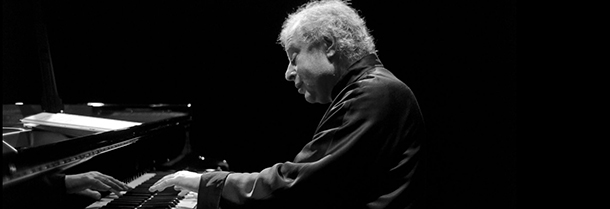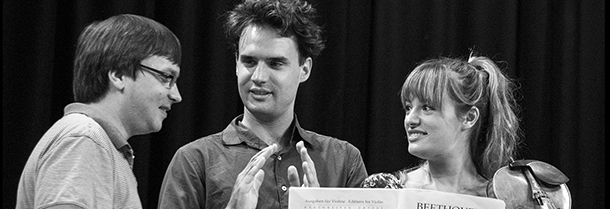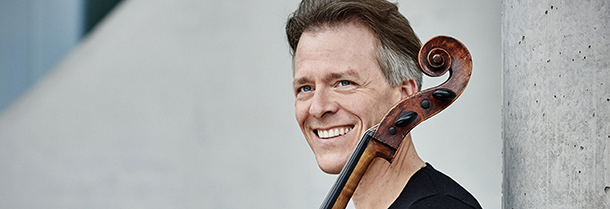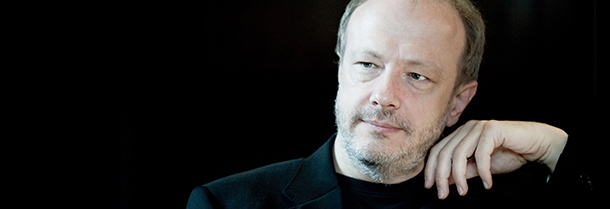Tag: Vancouver Recital Society
-

PROGRAM NOTES: SIR ANDRÁS SCHIFF
Robert Schumann Variations on an Original Theme in E at major (“Ghost Variations”) WoO 24 In February of 1854, Robert Schumann was in a state of delirium, but a very musical one. He was surrounded by ghosts, he told his wife Clara, ghosts that fed him wonderful music and had occasionally tried to drag him down…
-

PROGRAM NOTES: BENEDETTI ELSCHENBROICH GRYNYUK TRIO
Franz Schubert Adagio from Piano Trio in E at Major Op. 148 D 897 Schubert’s Adagio for Piano Trio D 897 was composed in 1827 but only published decades later, under the publisher’s title Notturno. And indeed, the opening section does conjure up images of nighttime serenity, with its heavenly texture of harp-like arpeggios in…
-

PROGRAM NOTES: SCHAGHAJEGH NOSRATI
Johann Sebastian Bach GOLDBERG VARIATIONS BWV 988 Historical Background Such was Bach’s mastery of his musical materials that he was often tempted to explore a particular genre or compositional technique in a systematic way by providing a quasi-exhaustive compendium of its possibilities. Fugue, for example, is represented in the two books of The Well-Tempered Clavier…
-

PROGRAM NOTES: NIKOLAJ ZNAIDER & ROBERT KULEK
Ludwig van Beethoven Sonata for Violin & Piano in G major Op. 30 No. 3 “Who are you, and what have you done with Ludwig van Beethoven?” Such is the question that Beethoven enthusiasts raised on the Pathétique Sonata, the Fifth Symphony, and the late quartets might wish to ask of the musician responsible for…
-

NOTICE OF THE VANCOUVER RECITAL SOCIETY’S AGM
NOTICE OF ANNUAL GENERAL MEETING OF MEMBERS OF THE VANCOUVER RECITAL SOCIETY (the “Society”) The Board of Directors of the Society hereby gives notice that the Annual General Meeting of the Society will be held on February 4, 2018 at 1pm at the Vancouver Playhouse (in Salon A), for the following purposes: Approval of the…
-

PROGRAM NOTES: TARA ERRAUGHT & JAMES BAILLIEU
Franz Liszt Victor Hugo Poems It may seem strange to think of Liszt as a song composer, so firmly is his name associated with 19th-century virtuoso pianism. But the extraordinary breadth of his musical sympathies is already clearly evident in the wide range of styles and moods in his piano compositions alone, from the bombast…
-

PROGRAM NOTES: SHEKU KANNEH-MASON & ISATA KANNEH-MASON
Gaspar Cassadó Suite for Solo Cello Gaspar Cassadó is hardly a household name, but he was one of the great cellists of the twentieth century, active as a performer, composer and transcriber for his instrument. Born in Barcelona in 1897, he was discovered at the age of nine by a young Catalan cellist just starting…
-

PROGRAM NOTES: PAUL LEWIS (CONCERT 1)
Franz Joseph Haydn Sonata in C major Hob. XV1:50 Haydn’s last three piano sonatas, Nos. 60 to 62 (Hob. XVI: 50-52), were written during the composer’s second trip to London in 1794-1795. All three were composed with a specific dedicatee in mind: the female keyboard virtuoso, Therese Jansen Bartolozzi (1770-1843), a student of Clementi that…
-

PROGRAM NOTES: ALBAN GERHARDT & STEVEN OSBORNE
Johann Sebastian Bach Cello Suite No. 2 in D minor BWV 1008 The instrumental suite, with its predictable allemande-courante-sarabande-gigue sequence of dances and its un-predictable addition of various galanteries (minuets, bourrées, gavottes, etc.), was a staple of the Baroque. Arising from neither of the period’s two great wellsprings of musical emotion – religious piety and…


